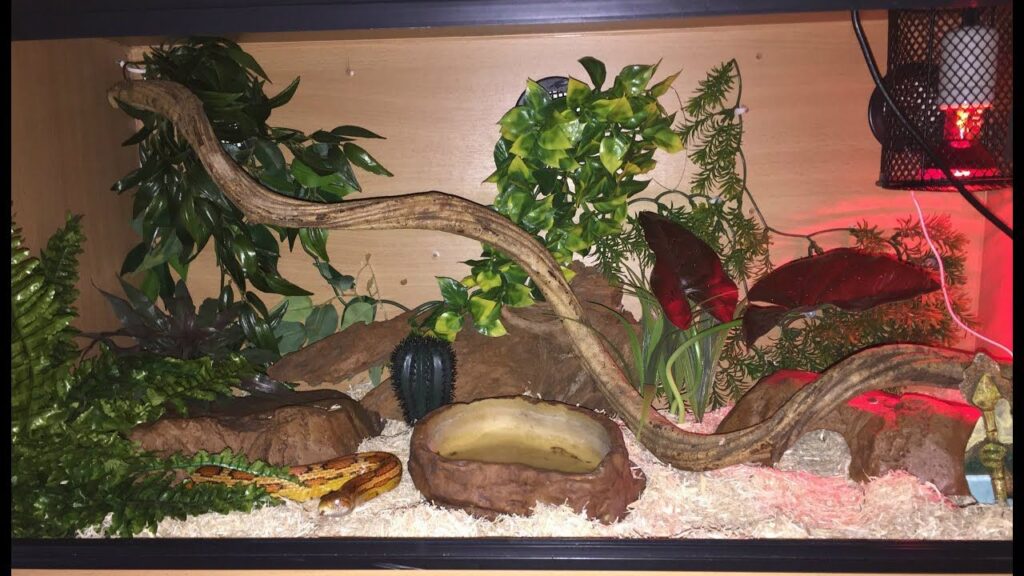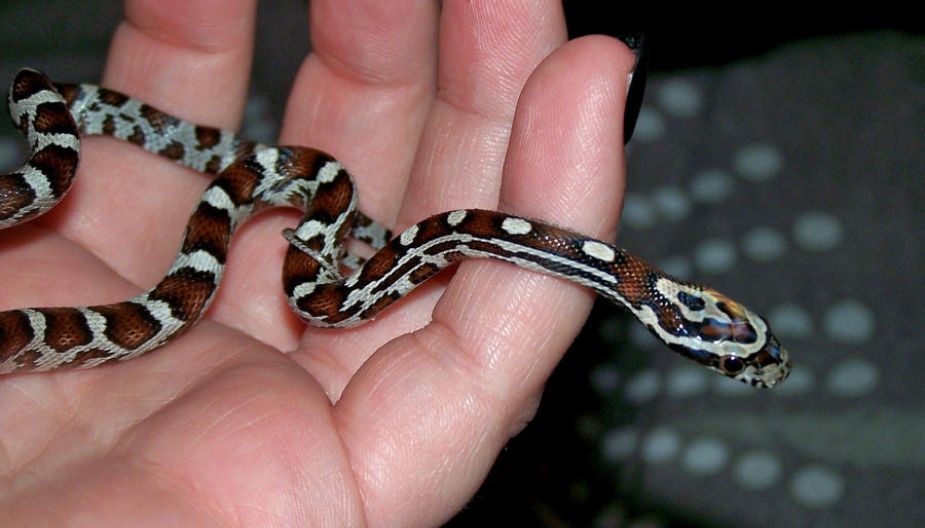When it comes to creating a naturalistic terrarium for your corn snake, it's important to consider more than just the basic necessities.
Just like in the wild, your corn snake's habitat should mimic its natural environment as closely as possible.
This not only provides a more enriching experience for your snake, but also contributes to its overall well-being.
By incorporating the right elements into the terrarium, you can create a space that not only looks beautiful but also meets the physical and psychological needs of your corn snake.
Understanding Corn Snake Habitats
To create a suitable habitat for your corn snake, it's essential to understand the environmental conditions that best mimic their natural surroundings. Corn snakes are native to the southeastern United States, where they inhabit a variety of environments, from forests to grasslands.
When recreating their habitat in a terrarium, it's crucial to provide temperature gradients that allow the snake to regulate its body temperature effectively. This can be achieved by using heat sources such as heat pads or ceramic heat emitters on one side of the enclosure, creating a warmer area, and leaving the other side cooler. This setup mimics the natural temperature variations found in the wild and enables the snake to thermo-regulate as needed.
In addition to temperature gradients, providing adequate hide boxes is essential for the well-being of your corn snake. These hide boxes serve as secure, private spaces where the snake can retreat to reduce stress and feel safe. Place hide boxes on both the warm and cool sides of the enclosure to ensure the snake has options to thermoregulate while feeling secure.
Selecting the Ideal Substrate
When selecting the ideal substrate for your corn snake's terrarium, consider using aspen shavings, cypress mulch, or paper-based bedding to provide a comfortable and naturalistic flooring. These substrates offer the right texture for your corn snake's comfort and promote natural behaviors such as burrowing and nesting. Additionally, they possess moisture retention properties that are crucial for maintaining the terrarium's humidity levels, essential for your snake's health.
- Aspen Shavings:
- Soft and non-abrasive texture
- Excellent at absorbing odors, keeping the terrarium fresh
- Promotes burrowing behavior, allowing your snake to exhibit natural behaviors
- Cypress Mulch:
- Naturally resistant to mold and decay
- Provides a natural woodland floor appearance
- Maintains moisture levels, creating a humid environment without being excessively damp
- Paper-Based Bedding:
- Dust-free and hypoallergenic
- Easy to spot-clean and replace
- Offers excellent moisture retention properties, ensuring a consistent humidity level in the terrarium
Incorporating Naturalistic Decor
Consider incorporating naturalistic decor in your corn snake's terrarium to create a stimulating and enriching environment that mimics its natural habitat. Naturalistic hides are essential for providing your corn snake with secure and private spaces. Opt for hides made from natural materials such as cork bark or driftwood, as these mimic the hiding spots found in the wild. Ensure that the hides are appropriately sized to allow your snake to comfortably curl up inside.
Artificial plant integration is another crucial aspect of creating a naturalistic terrarium. Select silk or plastic plants that closely resemble those found in the snake's natural environment. These plants not only enhance the visual appeal of the terrarium but also provide additional hiding spots and climbing opportunities for your corn snake. When placing artificial plants, consider creating varying heights and densities to mimic the complexity of a natural habitat.
Providing Adequate Heating and Lighting
For optimal health and well-being, ensure that the terrarium provides adequate heating and lighting to maintain the proper temperature gradients essential for your corn snake's physiological processes.
- Temperature Regulation
- Corn snakes require a thermal gradient in their terrarium to regulate their body temperature effectively. Provide a temperature range of 75-85°F (24-29°C) on the cooler end and 85-90°F (29-32°C) on the warmer end to mimic their natural habitat.
- Use thermostats to regulate heat sources such as heat mats or ceramic heat emitters. This will prevent overheating and ensure a consistent temperature throughout the terrarium.
- Lighting Schedule
- Corn snakes aren't diurnal, but they still benefit from a regular lighting schedule. Maintain a 12-hour day and night cycle using a low-intensity light source to simulate natural light patterns.
- Heat Sources and UVB Requirements
- Heat sources like heat mats or ceramic heat emitters are essential for creating the required temperature gradient. Additionally, provide a UVB light source for 10-12 hours a day to aid in calcium metabolism and overall well-being.
Maintaining a Healthy Environment
To maintain a healthy environment for your corn snake, ensure that the terrarium's temperature gradients are consistently regulated and that the lighting schedule mimics their natural habitat. Temperature regulation is crucial for your corn snake's well-being. Use a heat mat or ceramic heat emitter to create a warm side of the terrarium, around 85°F (29°C), and a cooler side, around 75°F (24°C). This allows your snake to thermoregulate properly. Humidity control is equally important. Maintain a humidity level of 40-60% by misting the terrarium daily and providing a humid hide. This helps with shedding and prevents respiratory issues. Implement a regular cleaning routine to prevent the buildup of harmful bacteria and parasites. Remove feces and uneaten food promptly, and clean the terrarium thoroughly on a regular basis. Disease prevention is key to maintaining a healthy environment. Ensure that the terrarium is free from any potential contaminants, and handle your snake with clean hands. By following these guidelines, you will create a healthy and safe environment for your corn snake.
| Aspect | Guidelines |
|---|---|
| Temperature Regulation | Create a warm side (85°F) and a cooler side (75°F) |
| Humidity Control | Maintain 40-60% humidity level |
| Cleaning Routines | Clean terrarium regularly, remove waste promptly |
| Disease Prevention | Handle snake with clean hands, ensure clean environment |
Conclusion
Now that you have all the essentials for creating a naturalistic terrarium for your corn snake, picture a lush and vibrant habitat that mimics the snake's natural environment.
With the right substrate, decor, heating, and lighting, you can provide a healthy and stimulating environment for your corn snake to thrive in.
So go ahead, get creative and transform your terrarium into a beautiful and naturalistic home for your corn snake.


